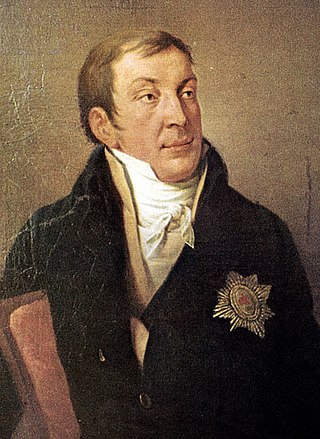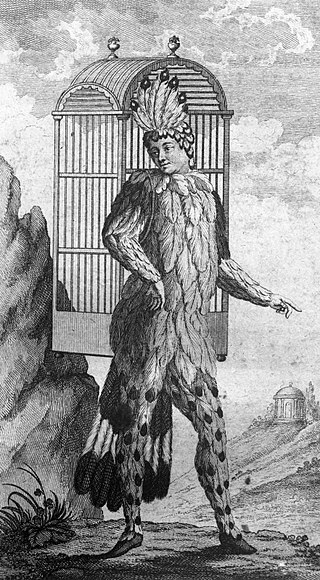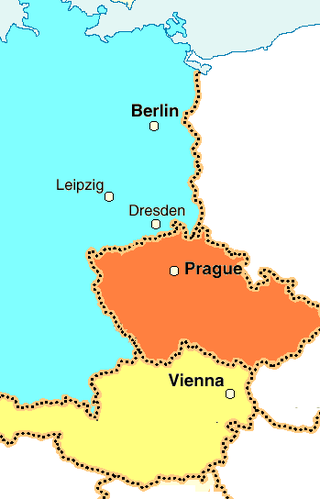Related Research Articles

Wolfgang Amadeus Mozart was a prolific and influential composer of the Classical period. Despite his short life, his rapid pace of composition resulted in more than 800 works representing virtually every Western classical genre of his time. Many of these compositions are acknowledged as pinnacles of the symphonic, concertante, chamber, operatic, and choral repertoire. Mozart is widely regarded as one of the greatest composers in the history of Western music, with his music admired for its "melodic beauty, its formal elegance and its richness of harmony and texture".

Symphony No. 40 in G minor, K. 550 was written by Wolfgang Amadeus Mozart in 1788. It is sometimes referred to as the "Great G minor symphony", to distinguish it from the "Little G minor symphony", No. 25. The two are the only extant minor key among Mozart's symphonies.

Gottfried Freiherr van Swieten was a Dutch-born Austrian diplomat, librarian, and government official who served the Holy Roman Empire during the 18th century. He was an enthusiastic amateur musician and is best remembered today as the patron of several great composers of the Classical era, including Carl Phillip Emanuel Bach, Joseph Haydn, Wolfgang Amadeus Mozart, and Ludwig van Beethoven.

Karl Alois, Prince Lichnowsky of Woschütz; was the second Prince Lichnowsky and a chamberlain at the Imperial Austrian court. He is remembered for his patronage of music and his relationships with Wolfgang Amadeus Mozart and Ludwig van Beethoven.

Emanuel Schikaneder was a German impresario, dramatist, actor, singer, and composer. He wrote the libretto of Wolfgang Amadeus Mozart's opera The Magic Flute and was the builder of the Theater an der Wien. Peter Branscombe called him "one of the most talented theatre men of his era". Aside from Mozart, he worked with Salieri, Haydn and Beethoven.

Ignaz Xaver Ritter von Seyfried was an Austrian musician, conductor and composer. He was born and died in Vienna. According to a statement in his handwritten memoirs he was a pupil of both Wolfgang Amadeus Mozart and Johann Georg Albrechtsberger. He edited Albrechtsberger's complete written works after his death, published by Tobias Haslinger. His own pupils included Franz von Suppé, Heinrich Wilhelm Ernst, Antonio Casimir Cartellieri, Joseph Fischhof and Eduard Marxsen who would later teach Brahms.

Maria Constanze Cäcilia Josepha Johanna Aloysia Mozart was a trained Austrian singer. She was married twice, first to Wolfgang Amadeus Mozart; then to Georg Nikolaus von Nissen. She and Mozart had six children: Karl Thomas Mozart, Franz Xaver Wolfgang Mozart, and four others who died in infancy. She became Mozart's biographer jointly with her second husband.

The Piano Concerto No. 27 in B♭ major, K. 595, is Wolfgang Amadeus Mozart's last piano concerto; it was first performed early in 1791, the year of his death.

Anton Franz Josef Eberl was an Austrian composer, teacher and pianist of the Classical period. He was a student of Salieri and Mozart. He was also seen as an early friend and rival of Beethoven.

Maria Josepha Weber was a German soprano of the classical era. She was a sister-in-law of Wolfgang Amadeus Mozart, and the first to perform the role of The Queen of the Night in Mozart's opera The Magic Flute (1791).
(Friedrich) Sebastian Mayer was a bass singer and stage director of the Classical era.

One of the longest adulthood journeys of Wolfgang Amadeus Mozart was a visit, beginning in spring 1789, to a series of cities lying northward of his adopted home in Vienna: Prague, Leipzig, Dresden, and Berlin.

On 5 December 1791, the composer Wolfgang Amadeus Mozart died at his home in Vienna, Austria, at the age of 35. The circumstances of his death have attracted much research and speculation.
Wolfgang Amadeus Mozart (1756–1791) had a powerful influence on the works of Ludwig van Beethoven (1770–1827). Beethoven held Mozart in high regard; some of his music recalls Mozart's, he composed several variations on Mozart's themes and he modeled a number of his compositions on those of the older composer. Whether the two men ever actually met remains a matter of speculation among scholars.

Joseph Lange was an actor and amateur painter of the 18th century. Through his marriage to Aloysia Weber, he was the brother-in-law of Wolfgang Amadeus Mozart.

Maria Wilhelmine von Thun und Hohenstein, born Uhlfeldt was a Viennese countess. She is remembered as the sponsor of a musically and intellectually outstanding salon and for her patronage of music, notably that of Mozart and Beethoven.

The Augarten is a public park of 52.2 hectares situated in the Leopoldstadt, the second district of Vienna, Austria. It contains the city's oldest Baroque park.

Maria Sophie Weber (1763–1846) was a singer of the 18th and 19th centuries. She was the younger sister of Wolfgang Amadeus Mozart's wife, Constanze, and is remembered primarily for the testimony she left concerning the life and death of her brother-in-law.
The Gesellschaft der Associierten was an association of music-loving noblemen centered in Vienna and founded by Baron Gottfried van Swieten in 1786. The society sponsored concerts, often reviving music from the past, and also commissioned new works.

The Tonkünstler-Societät was a benevolent society for musicians in Vienna, which lasted from the mid-18th century to the mid-20th. Its purpose was "to support retired musicians and their families". Beginning in 1772, the Society mounted a series of benefit concerts, often with large forces of performers, at which were performed works by leading Classical-period composers, including Joseph Haydn, Wolfgang Amadeus Mozart, and Ludwig van Beethoven.
References
- Clive, Peter (2001) Beethoven and His World: A Biographical Dictionary. Oxford University Press.
- Deutsch, Otto Erich (1965) Mozart: A Documentary Biography. Stanford, CA: Stanford University Press.
- Solomon, Maynard (1995) Mozart: A Life. New York: Harper Collins.